11174 AN IMPRESSIVE PAIR OF MASSIVE FAUX ROSSO LEVANTO AND GILTWOOD VASES Probably Italian. First Quarter Of The Eighteenth Century. Measurements: Height: 62″ (157 cm); Diameter: 23 1/2″ (60 cm). Slight difference in height, by 1″.
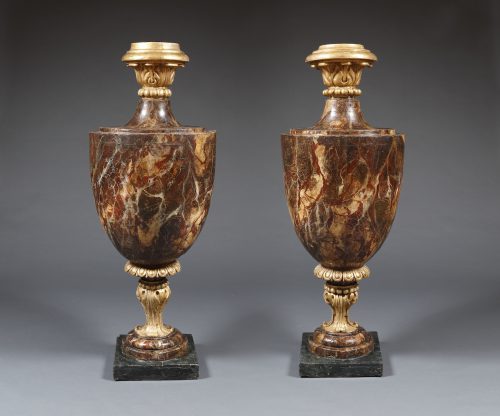
Reaseach
Of giltwood and faux painted decoration. Each surmounted by a foliate giltwood cap above a painted faux rosso levanto vasiform paneled body. Both raised on an inverted bud-shaped socle resting upon a bullnose molding and plain square plinth. Gilding sympathetically restored. There are some small differences to the interpretation of the design/proportion of the carving. Shrinkage cracks to bodies and one socle consistent with age. Some charring to top inner surface indicating once used to hold large candles.
Provenance:
Private collection, Switzerland.
Imitation of natural materials in decorative painting has been practiced for centuries. In ancient Egypt, rare and foreign wood grains were mimicked on sarcophagi. The ancient Greeks and Romans followed, decorating their villas with impressive trompe l’oeil architectural masterpieces, such as the faux marble panels employed at the Villa Arianna, Stabiae circa 80 BC (figure 1).
From the Renaissance onward, faux finishing techniques were practiced and improved both for the imitation of natural materials to create architectural elements such as walls, columns and moldings, but also on furnishings and objet d’art. Two schools developed; the Italian, which was loose and the effects best achieved when viewed at a distance, and the French which was more formal and intricate. Eighteenth century interiors with exceptional faux painted schemes include the Casino Borghese, redecorated with gilding, faux marble finishes and trompe l’oeil frescoes in the late 18th century by Prince Marcantonio Borghese and his architects Antoino and Mario Asprucci (figure 2).
The present vases are painted in imitation of rosso levanto marble, a serpentinite rock first quarried in the 16th century near Levanto on the Ligurian coast of Italy. “From a geological point of view, Liguria is one of the most complex areas in the peninsula and in the whole region.”1 The main use of rosso levanto is in interior flooring, wall cladding, and architectural features. It was used by the Etruscans in ancient times, found in many Genoese palaces and churches from the Middle Ages and Renaissance,2 and by the 18th century was employed in furnishings and decorative objects such as chimneypieces, decorative columns, vases, and tabletops.
The massive scale of the present vases is indicative of the exceptional grandeur of the interior scheme to which they once belonged. The vases are very finely crafted; the bodies being made by means of curved and framed flush panels.
Footnotes:
- Cimmino, Franca, et. al. “Stones and Coloured Marbles of Liguria in Historical Monuments.” Periodico Di Mineralogia 73 (2003): 71-84. Web.
- Ibid.
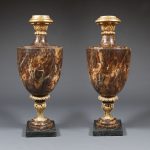
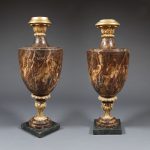
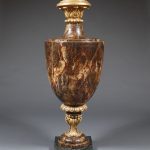

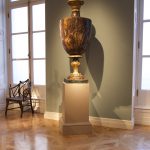
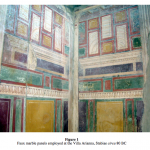
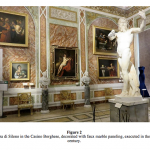
Comments are closed.